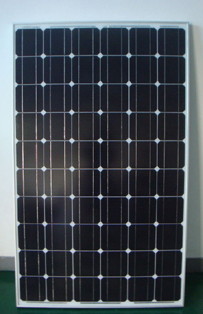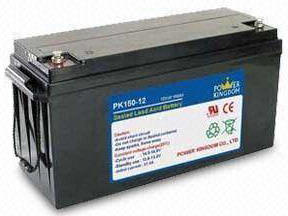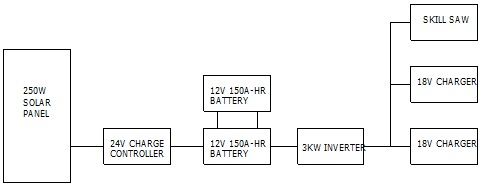|
Portable Solar Power System for
Fence Installers
I while back, I
was watching a crew of two people install a fence along a street near my house.
The main power tools they were using were a Skill type circular saw and a couple
cordless drills. |
 |
| They had a large
flat bed truck with a small gasoline generator chugging along to supply the 120vac
needed for the saw and to charge the batteries for their cordless drills. They
started their day early in the morning and worked until the late afternoon. I
figured they put in a solid 8 hours of work each day. |
|
|
|
|
| |
| I
wondered if instead of a gasoline powered generator, could they use a solar panel, a
storage battery and an inverter to run their equipment18 It would certainly be
quieter and would not belch out any exhaust. Would this idea work18
Letís run some quick math and find out. |
| Letís
first figure out how much energy the two installers need for their operation. |
| The
rotary saw was used by only one of the crew members. The saw ran for just 4
seconds for each operation and was used only about once every 2 minutes. |
|
The saw most likely demanded about a kilowatt of power. The
duty cycle of the saw usage was 4 seconds every 120 seconds or about 3.3%.
That means over the course of 8 hours, the saw was in operation for about 16 minutes
or 0.27 hours. Multiply that by 1000 watts and you get 270 watt-hours of
energy for a day of work for the saw. |
|
|
| The electric
drills were used more often and two of them were in constant operation. The drills
were mostly used to secure the fence pickets. It seemed that the installers
were changing out their battery packs every 30 minutes. It looked like their drills
used standard 18v 5 lithium ion cell battery packs with a 1 Amp-hour capacity.
Two battery packs were being charged in 30 minutes so the burden on the 120vac power
source to charge the two packs would be 4.2v x 5 cells x 2 Amps x 2 packs or 84
watts. Multiply that by 8 hours and you get 672 watt-hours. |
 |
| If we take the 270
watt-hours for the saw and 672 watt-hours for the drills, we get a total of 942
watt-hours. Letís round it off to 1000 watt-hours. |
| A good size solar
panel for this kind of application would be a 250 watt device as shown below.
The panel contains 60 cells and is designed to charge a 24v battery. The panel
would be mounted on a movable platform on the bed of the truck, so it could be
quickly pointed due south at a 45 degree angle. This position should work
until the crew moved down the street and changed direction. |
| The average sunny
day has about 6 hours of useable sunlight, so the energy needed by the crew for 8
hours of work, would have to be generated during this shorter time.
|
250w Solar Panel |
| 250
watts times 6 hours is 1500 watt-hours. That is how much energy would be available
for the workers. That exceeds the 1000 watt-hours needed by the crew with a good
50% margin. To maintain operation even during overcast periods, some kind of energy
storage battery would be needed. The rule of thumb for battery systems is to make
the battery energy storage twice as big as needed. This insures a longer
battery life. So, if 1500 watts is generated by the solar panel, then the
battery should be rated at 3000 watt-hours. If you divide that figure by 24
you get a needed battery rating of 120 Amp-hours. Perhaps two 12v 150 Amp-hour
batteries as shown below would do the job. |
 |
The output of the solar panel would be routed through a battery
charge controller, then to the pair of 12v lead acid batteries. The
controller insures that the battery is not overcharged. Finally, a 24v
DC to 120vac power inverter would be used to supply power for the saw and for
the two 18v lithium battery charge stations, powered by the 120vac. |
|
12v 150 Amp-hr Sealed Lead Acid Battery |
|
|
 |
 |
|
Battery Charge Controller |
3KW Inverter |
|
| The
complete power system is shown below. |
|
 |
| |
| In
conclusion, it certainly appears that a single 250 watt solar panel could provide
all the energy needed for the two fence installers. They could use their power
tools without burning a single drop of gasoline. Perhaps other similar solar power
systems could be designed for other portable power needs. As gasoline prices
continue to increase, these renewable energy systems will become more appealing.
|
|
|
| |